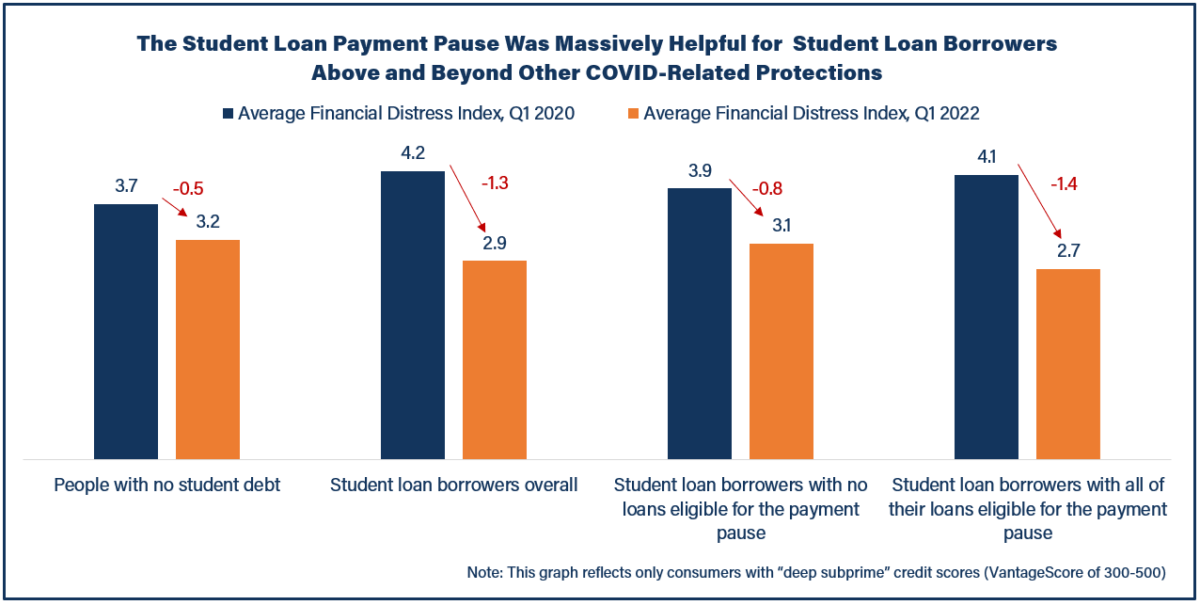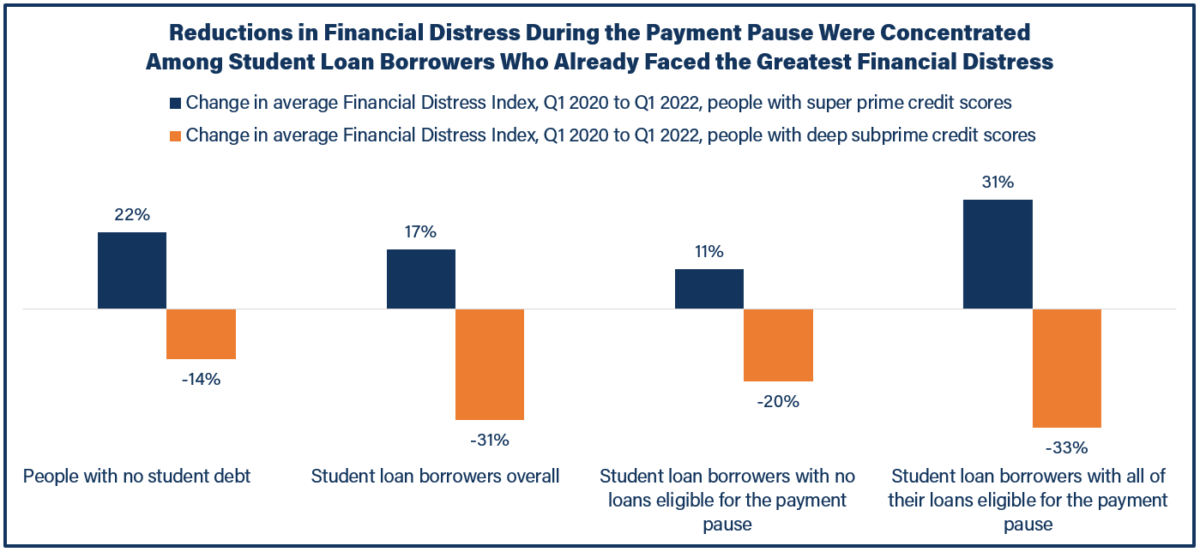By Dalié Jiménez, Jonathan Glater, and Sultana Fouzia | March 6, 2023
When the COVID-19 pandemic arrived in early 2020, policymakers in Washington responded in part by pausing payments on federal student loans. This move—which was extended during both the Trump and Biden Administrations—offered borrowers across the country badly-needed breathing room in the context of a once-in-a-generation public health catastrophe.
Later, in August 2022, the Biden Administration announced that it would eliminate up to $20,000 in federal student loan debt for tens of millions of student loan borrowers in an effort to help them return to student loan repayment amid the pandemic’s lingering economic harms. Now, with the Supreme Court deliberating on President Biden’s cancellation plan, it is more important than ever before for the public to be fully aware of how impactful federal relief efforts for student loan borrowers have been during COVID.
With this context in mind, the Student Loan Law Initiative today released a new analysis showing that the ongoing student loan payment pause may have been even more beneficial for federal borrowers than previously understood. Using data from the University of California Consumer Credit Panel which includes every person with a credit file living in California, we construct a novel index for personal financial hardship we term the Financial Distress Index (FDI).[*]
The Student Loan Law Initiative today released a new analysis showing that the ongoing student loan payment pause may have been even more beneficial for federal borrowers than previously understood.
Read SLLI’s new analysis, The Student Loan Payment Pause: Assessing Financial Distress in California, here.
By comparing the credit files of individuals with and without student debt in various groups levels of credit scores before and during the payment pause, we found the following:
- The student loan payment pause had massive positive effects for student loan borrowers above and beyond the benefits of other COVID relief programs. The federal government undertook a number of pandemic relief efforts in parallel to the student loan payment pause such as expanding unemployment insurance benefits and placing a moratorium on evictions. However, our analysis shows that the effect of the payment pause for student loan borrowers goes above and beyond even the benefits of these additional protections. For example, we find that in the first calendar quarter of 2020, people with deep subprime credit scores (VantageScore of 300-500) and no student loan debt had an average FDI of 3.7, while deep subprime consumers with student loan debt had an average FDI of 4.2. By the first quarter of 2022, people in the deep subprime credit band and no student loan debt had improved their average FDI to be only 3.2. But student loan borrowers in the deep subprime range had seen their FDI fall all the way down to 2.9. The effect was even more dramatic when comparing student loan borrowers who were not eligible for the payment pause to those who were—from the first quarter of 2020 to the first quarter of 2022, average FDI for deep subprime borrowers whose loans were not eligible for the payment pause fell from 3.9 to 3.1, while the average FDI for subprime borrowers whose loans were eligible for the payment pause fell from 4.1 to 2.7. In addition, we found that over our study period almost twice as many people with student loan debt saw their FDI fall to zero, relative to people who did not have student loan debt. While only 3.7 percent of people without student loan debt saw their FDI fall to zero, 7.3 percent of student loan borrowers as a whole and 8.4 percent of borrowers who only had student loans that were eligible for the payment pause saw their FDI fall to nothing. In all, it’s clear that the payment pause offered borrowers huge benefits.

- The payment pause offered its biggest benefits to those who already faced the greatest financial hardship. Political opponents of student debt relief have argued that the payment pause is a giveaway to the well-off. Our findings contradict that line of reasoning. For example, we found that the average FDI score for student loan borrowers in the deep subprime credit score segment who had an FDI of greater than zero before COVID fell 31 percent from the first quarter of 2020 to the first quarter of 2022, while the average FDI for super prime student loan borrowers (VantageScore of 781 to 850) who had an FDI of greater than zero before COVID rose 17 percent over the same period. As above, these results are distinguishable from the possible effects of other government interventions that happened alongside the payment pause. For example, while the average FDI of subprime student loan borrowers who had an FDI of greater than zero before COVID and who had all their student loans eligible for the payment pause fell more than 33 percent from the first quarter of 2020 to the first quarter of 2022, the average FDI of subprime student loan borrowers who had an FDI of greater than zero before COVID and who did not have any student loans eligible for the payment pause fell only 20 percent over the same period.

Our results make clear that the Biden Administration’s bold action to protect student loan borrowers during our national health emergency was massively successful. As the courts and the public look to evaluate the potential upcoming cancellation action, they should keep this throughline from COVID response to student borrower protection in mind.
###
Dalié Jiménez is a professor at UC Irvine School of Law and co-founder of the Student Loan Law Initiative. Professor Jiménez’s scholarly work focuses on contracts, bankruptcy, consumer financial distress, the regulation of financial products and its intersection with consumer protection, and access to justice. Professor Jiménez spent a year as part of the founding staff of the Consumer Financial Protection Bureau where she worked on debt collection, debt relief, credit reporting, and student loan issues.
Jonathan D. Glater is a professor at Berkeley Law, where his scholarship focuses on equity in higher education access and in particular on the effects of student debt. He is a co-founder with the Student Loan Law Initiative, as well as faculty director of the Center for Consumer Law and Economic Justice at Berkeley Law.
Sultana Fouzia is a Postdoctoral Scholar at Berkeley Law. Her current work uses empirical methods to evaluate the impact of student debt on borrowers’ welfare. Fouzia holds a Ph.D. in Applied Economics from Oregon State University.
[*] FDI is calculated as the number of financially distressing events individuals experience over a given period of time such as falling into delinquency on a loan, having a debt be sent into collections, filing for bankruptcy, and more. See more here.